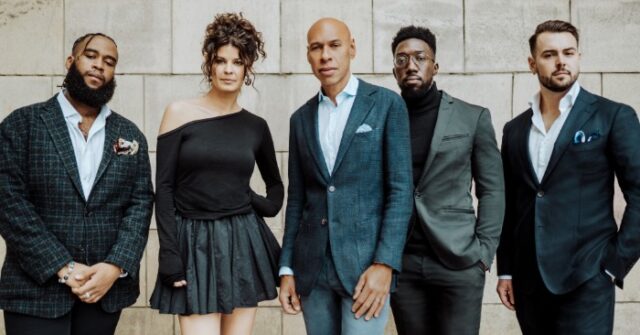
When I was in high school and determined to figure out this “jazz” thing, I went to the Electric Fetus and purchased two albums: Kind of Blue (obviously), and Joshua Redman’s Moodswing, the now-classic album from an incredible quartet. Perhaps this says more about me than it does about him, but for the last thirty years, this is the company he’s been keeping. He started at the very elite levels of the jazz world, and for good reason. Every album and every performance is an Event, an experience that should not be missed.
With Joshua, it’s easy to miss the trees for the forest. Redman’s active, fully engaged posture, his fully formed musical intent, the rhythmic figures that bounce through the ensemble and back to him, and the care with which he builds a crescendo, are no different than the visceral experience of watching a world-class athlete perform. But as with most jazz shows where only seven or eight songs are played, it’s nice to appreciate the trees as well.
Did I expect to hear Chopin at the beginning of this show? I did not! The band opened with Barry Manilow’s classic “Could It Be Magic,” which was inspired by Frederick Chopin’s Prelude in C Minor (Op. 28, No. 20). Later they worked in a bit of Charles Ives’ “Three Places in New England” as a precursor to the Betty Carter song “New England.”
Did I expect to hear a chestnut like “Do You Know What It Means to Miss New Orleans”? This standard was done in a languid, down-tempo way that lets vocalist Gabrielle Cavassa shine. When evoking New Orleans, the tendency is to let loose and party a bit, which they do at the end of the tune.
The tenor saxophone’s written range is two and a half octaves. But in Redman’s hands, he can push the upper limits of his horn to achieve searing melodies that would wilt in the care of lesser players. His command of the altissimo range is incredible, and on the rare occasions where he misses a note, it simply illustrates how fiendishly difficult what he’s attempting is. (Just like Miles Davis, even his distorted notes have their own pleasant sound, and become part of the melody.)
“After Minneapolis” was written by Redman in the wake of the George Floyd murder. Starting by quoting “This Land is Your Land” (one of the first protest songs), the ensemble enters in a dirge-like tempo, then explodes with all the emotions of that time: fear, rage, chaos, and hope. Very powerful and moving.
Vocalist Gabrielle Cavassa was a revelation. Winner of the 2021 Sarah Vaughan Jazz Vocal competition, her lush, resonant voice complemented Redman’s sweet, burnished tenor sound perfectly. Instead of trying to lead the band, she was part of the ensemble, adding greatly to the music.
It’s simply astonishing to watch an artist in such complete control of their expressive tools. Redman mastered the jazz vocabulary decades ago and has mastered the language of music to a level few can reach. The most difficult thing in music is to sound like yourself, and Joshua Redman has crafted a sound and an aesthetic, that is profoundly personal.

